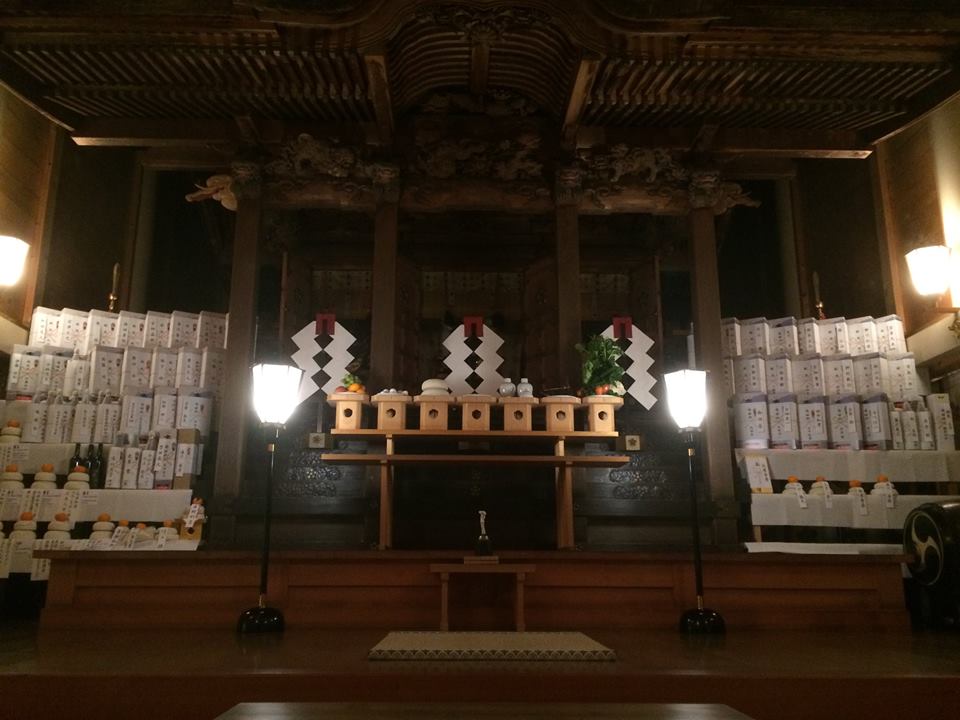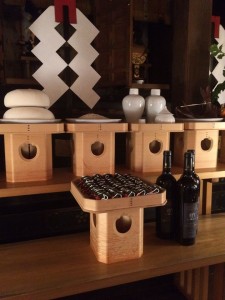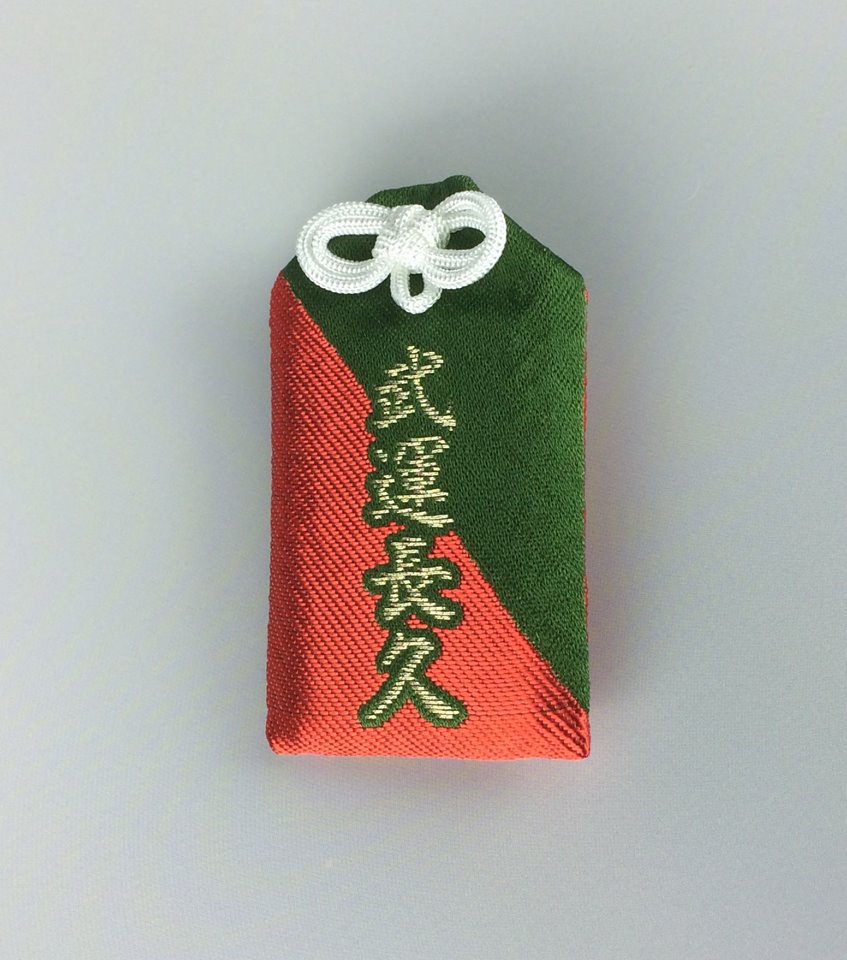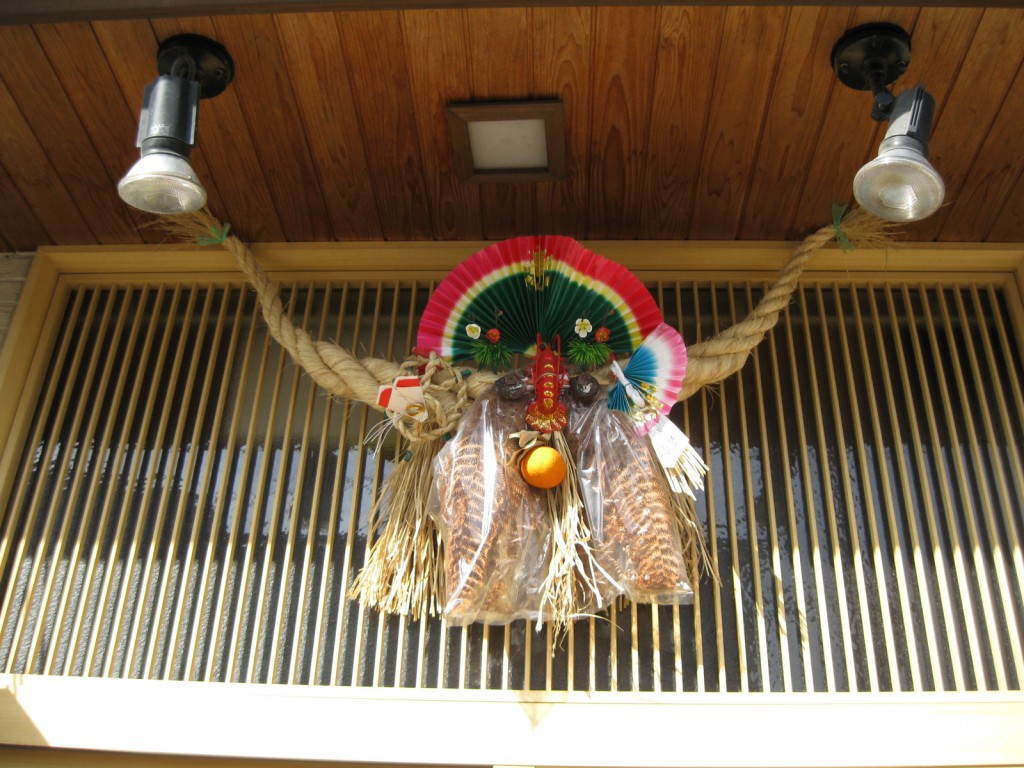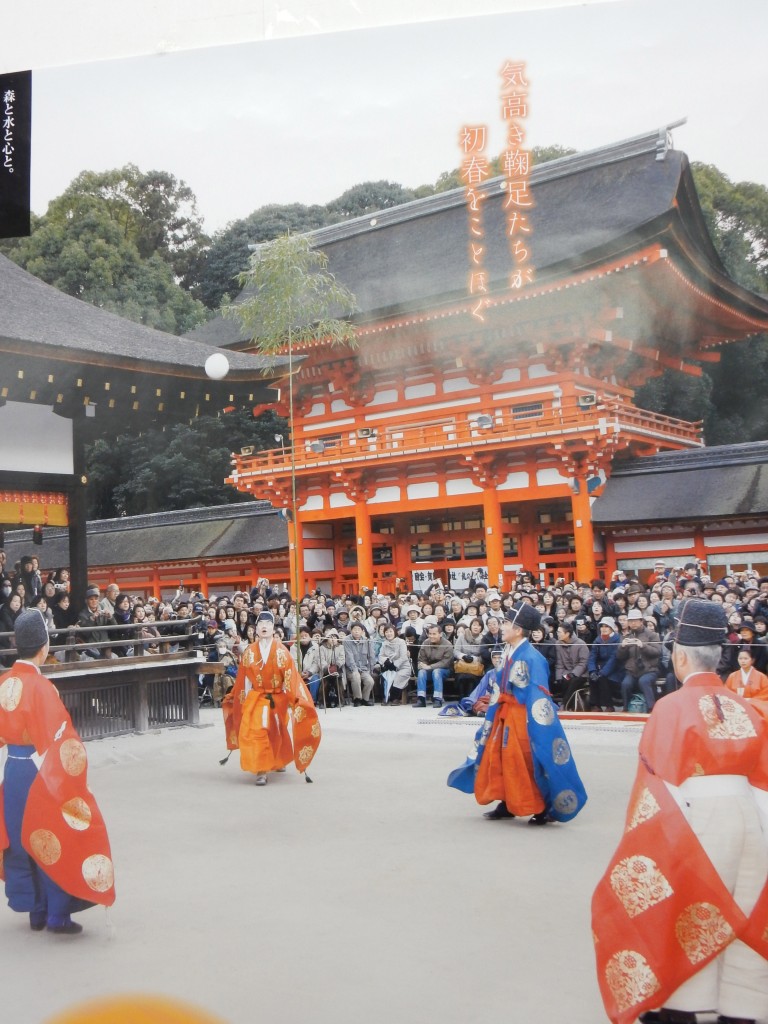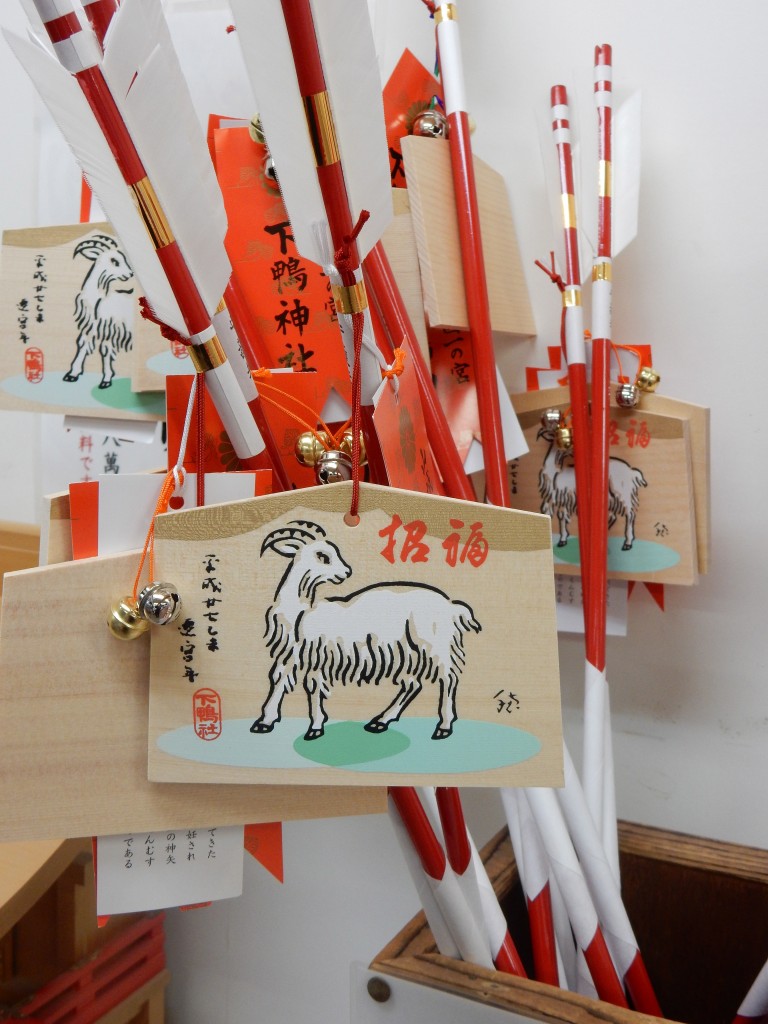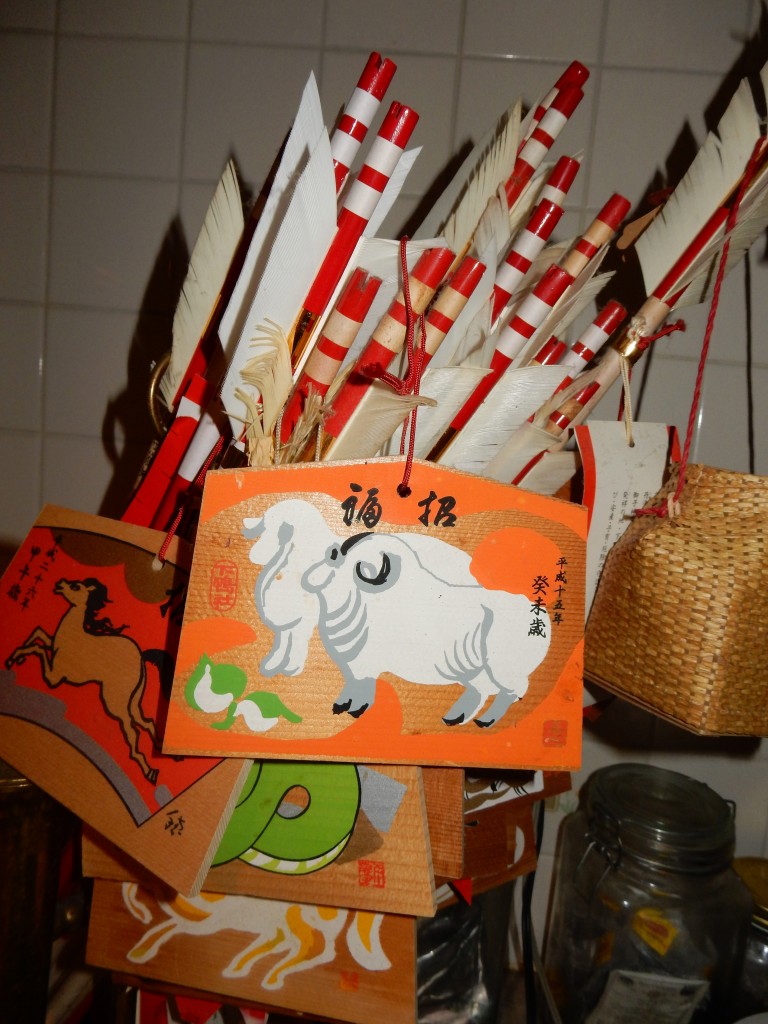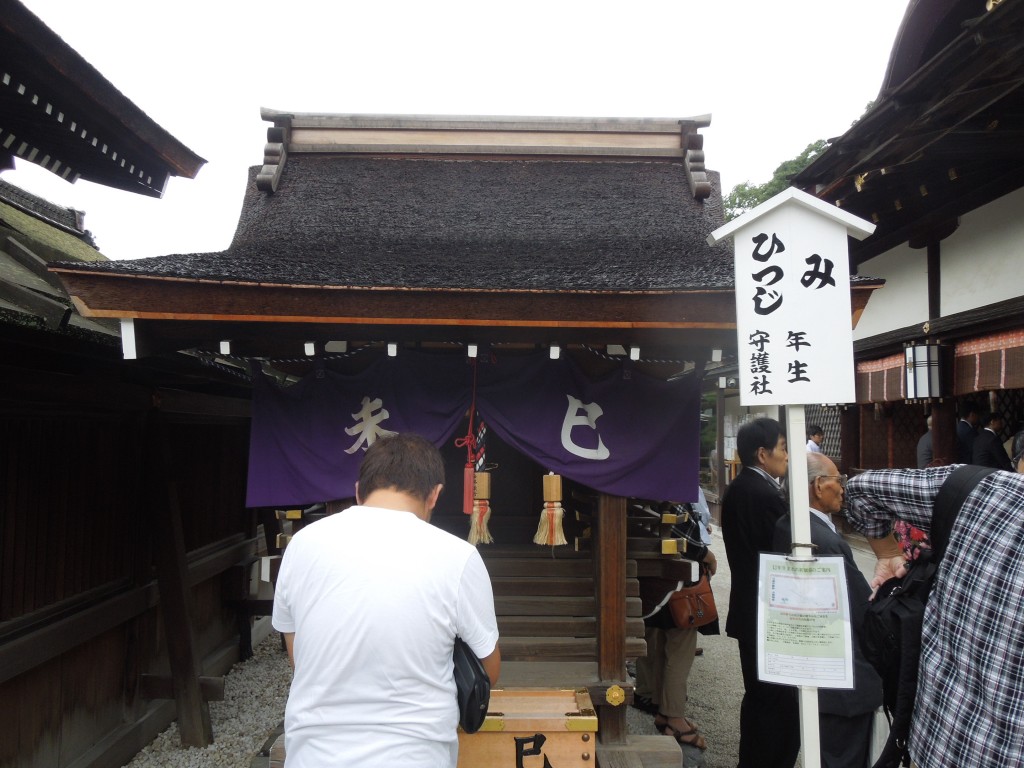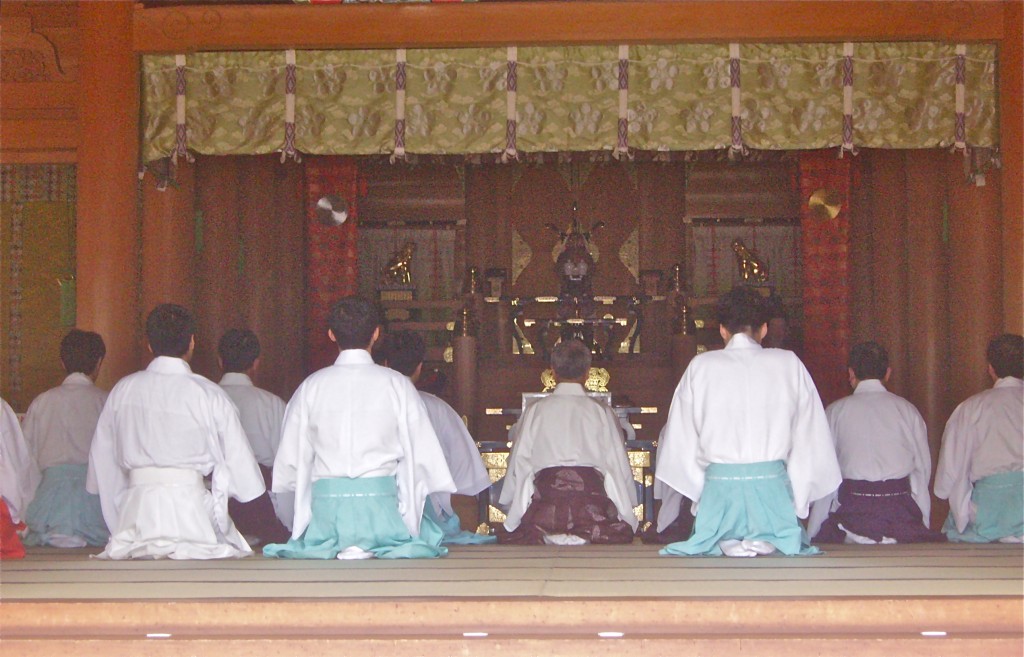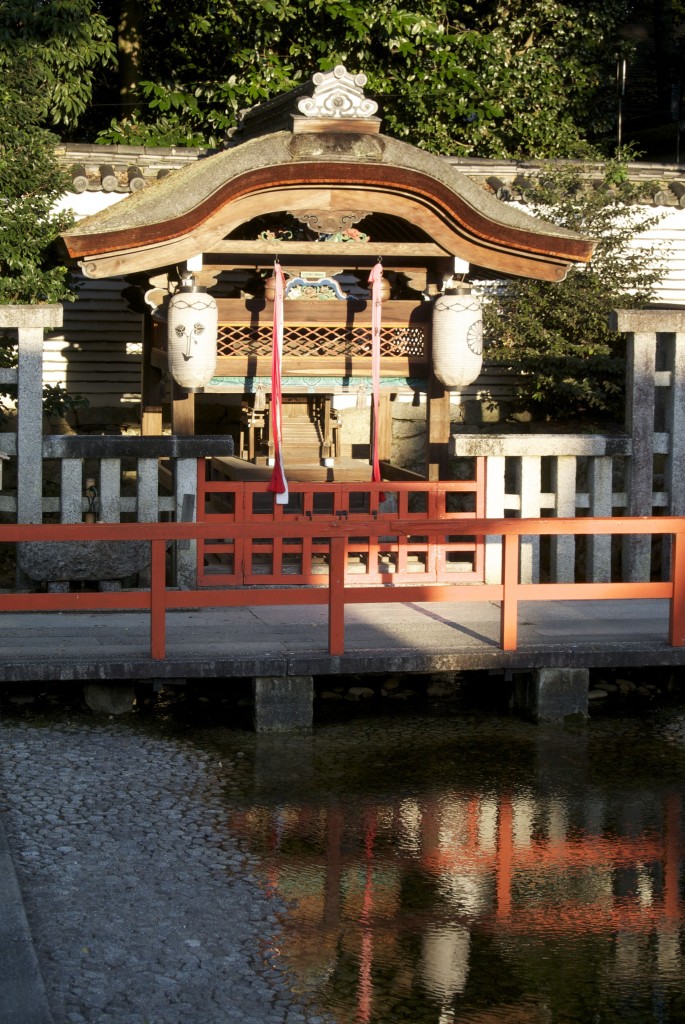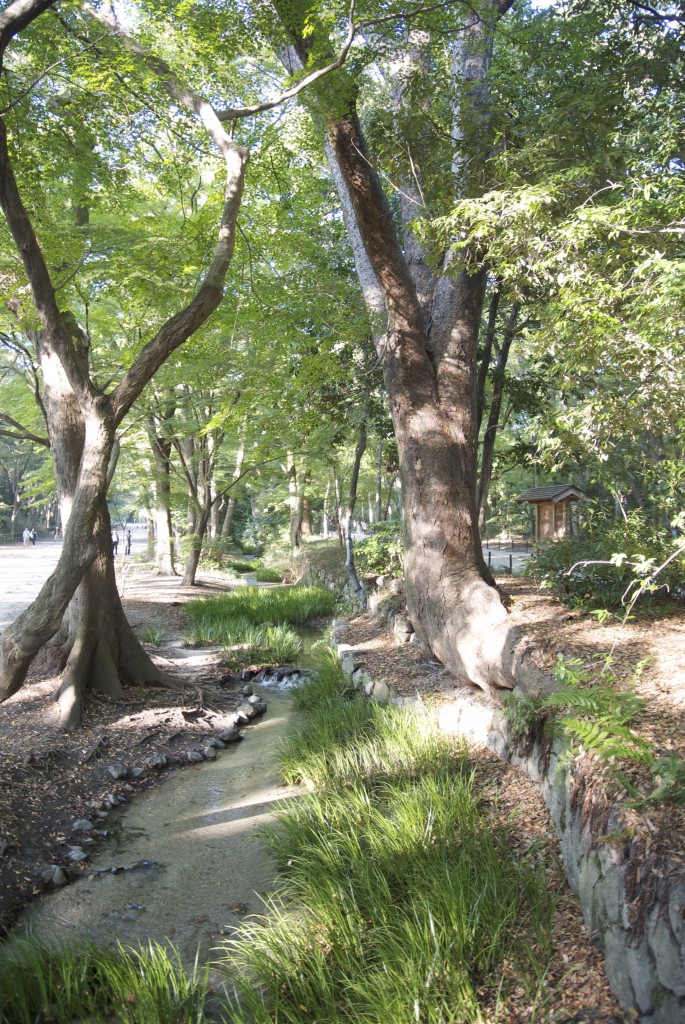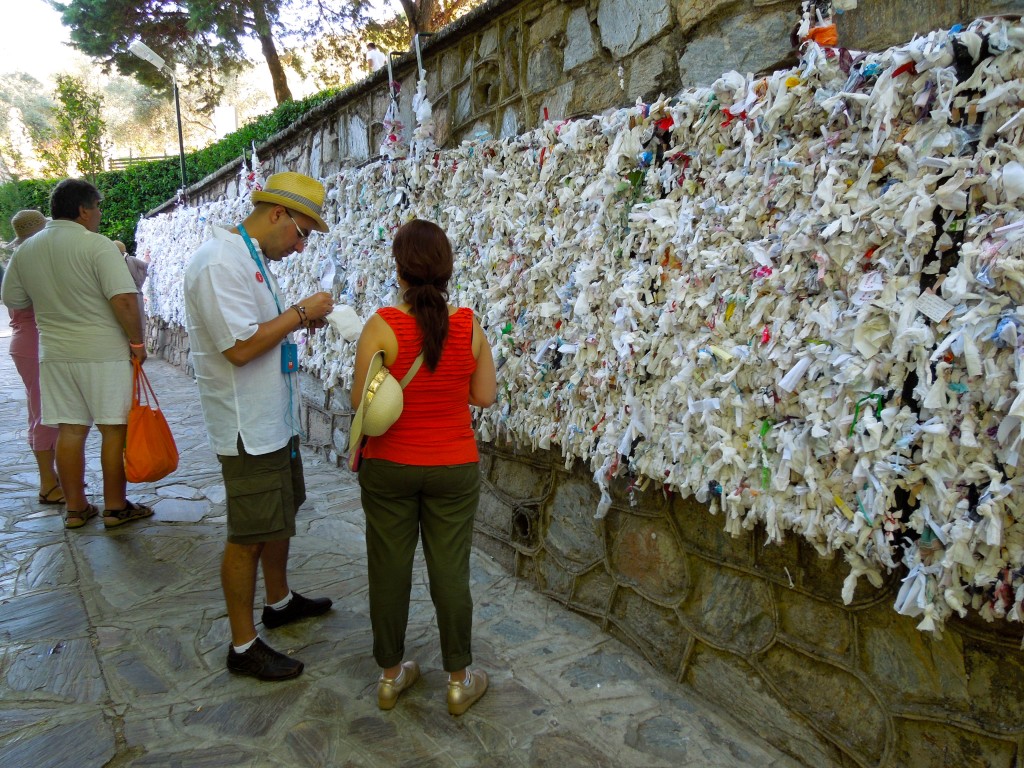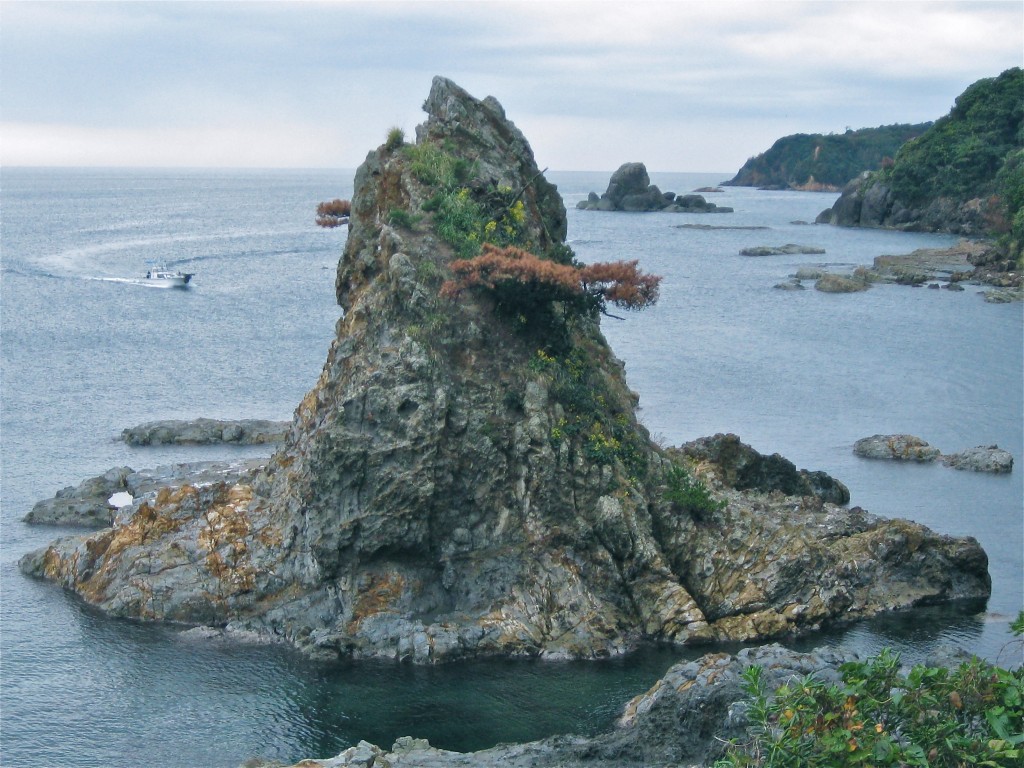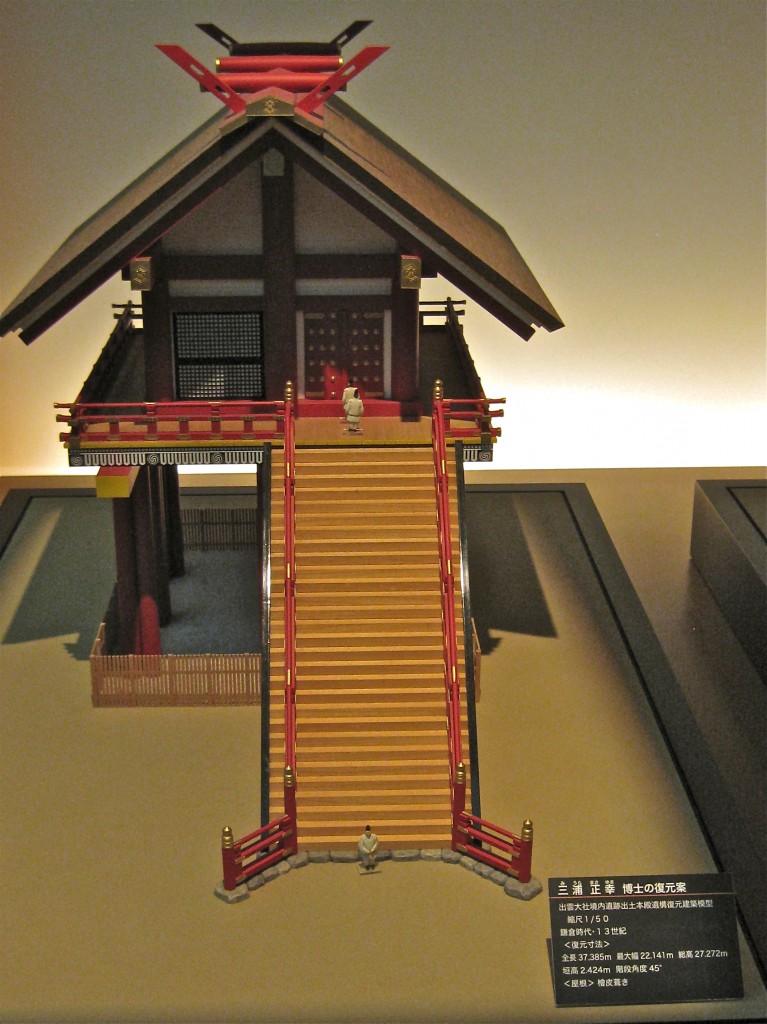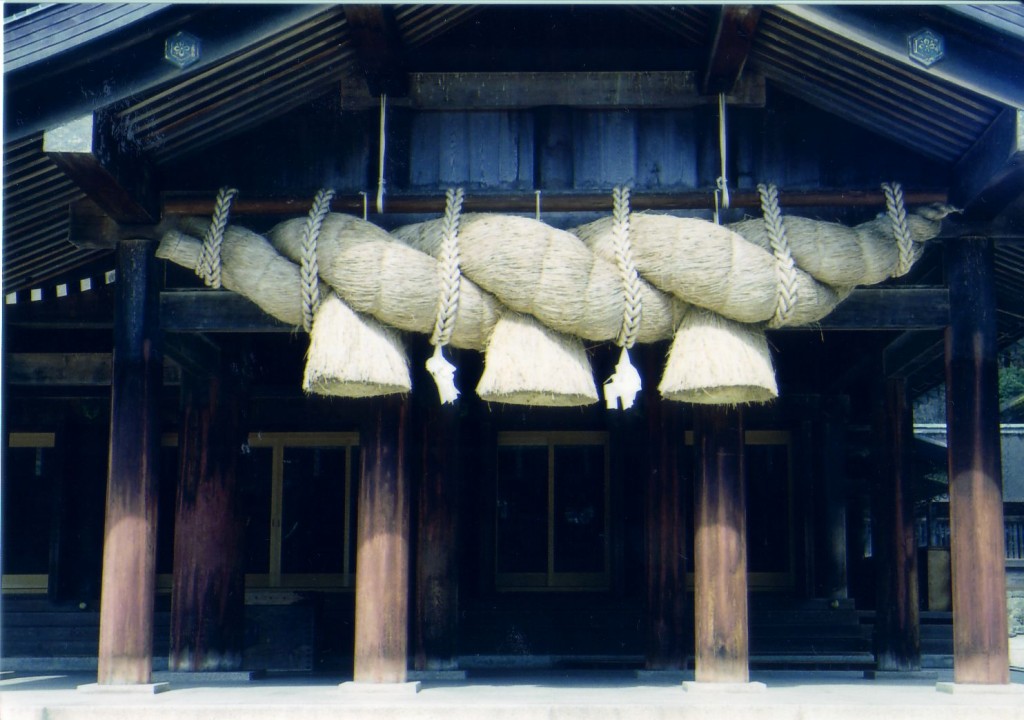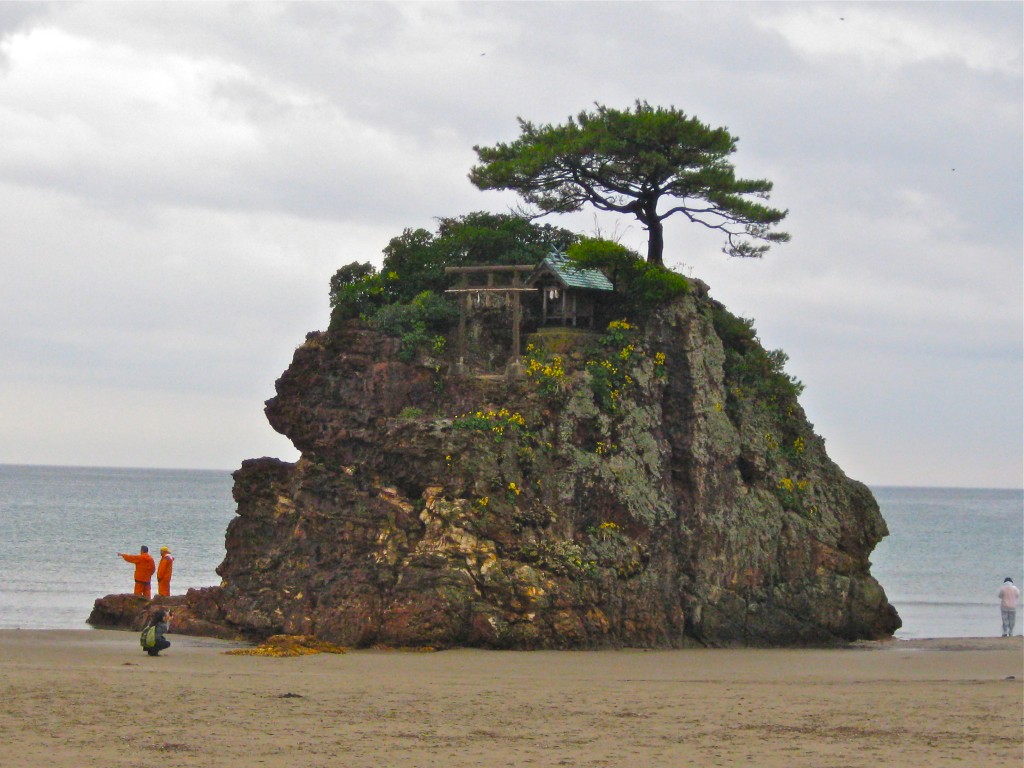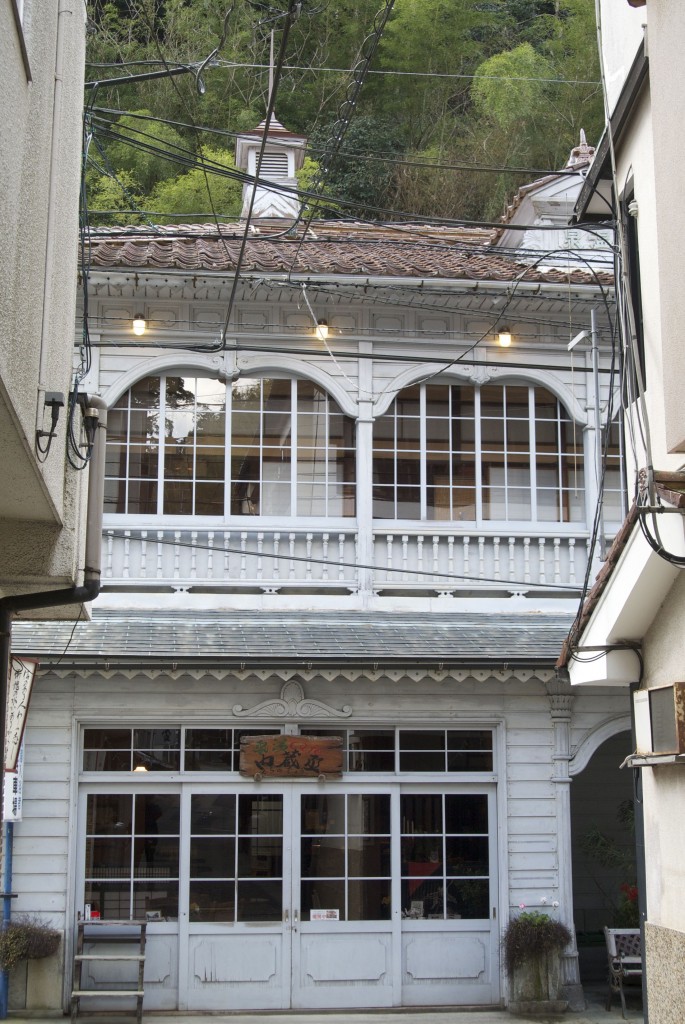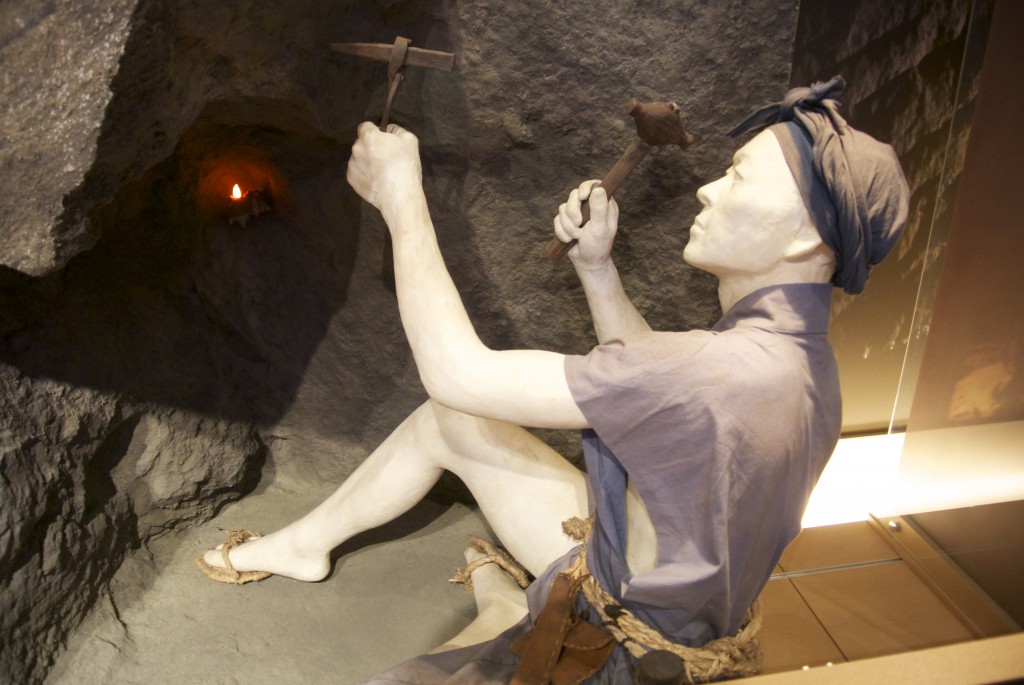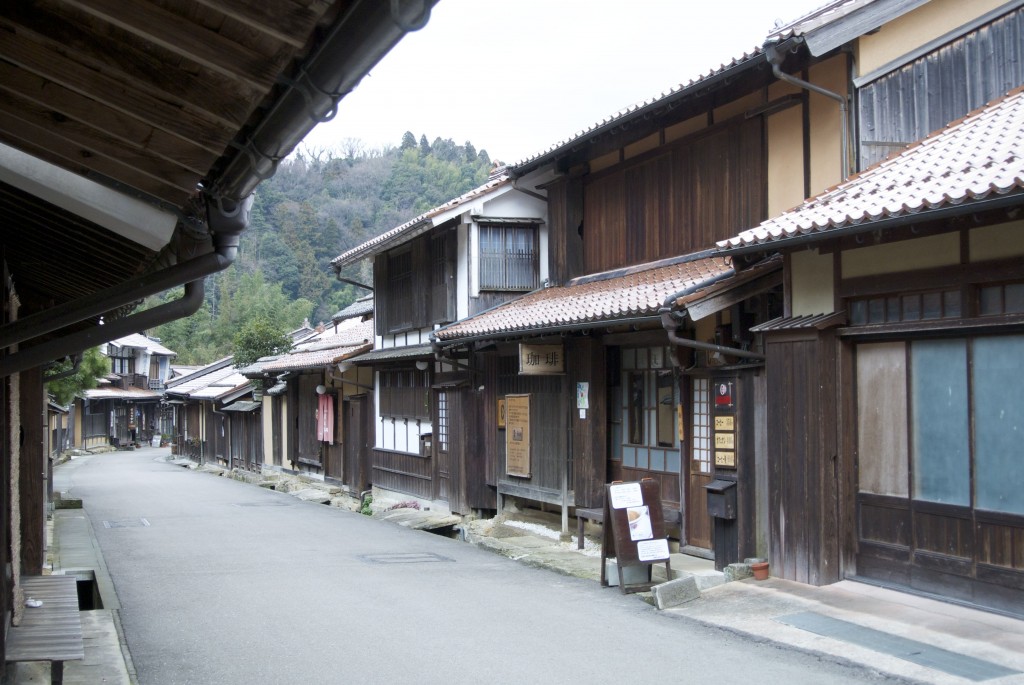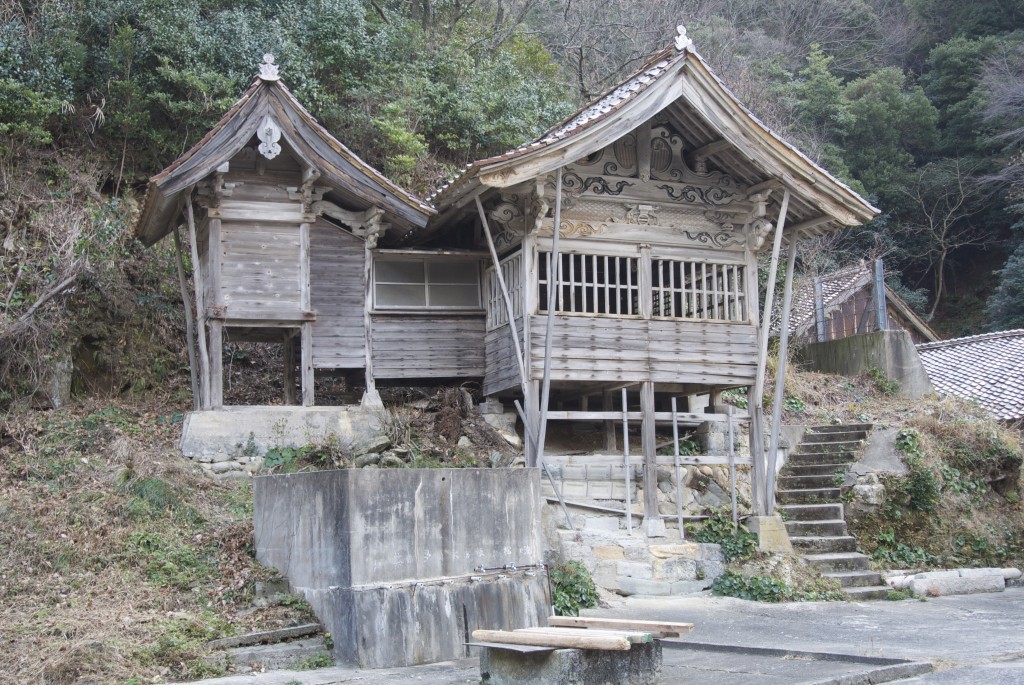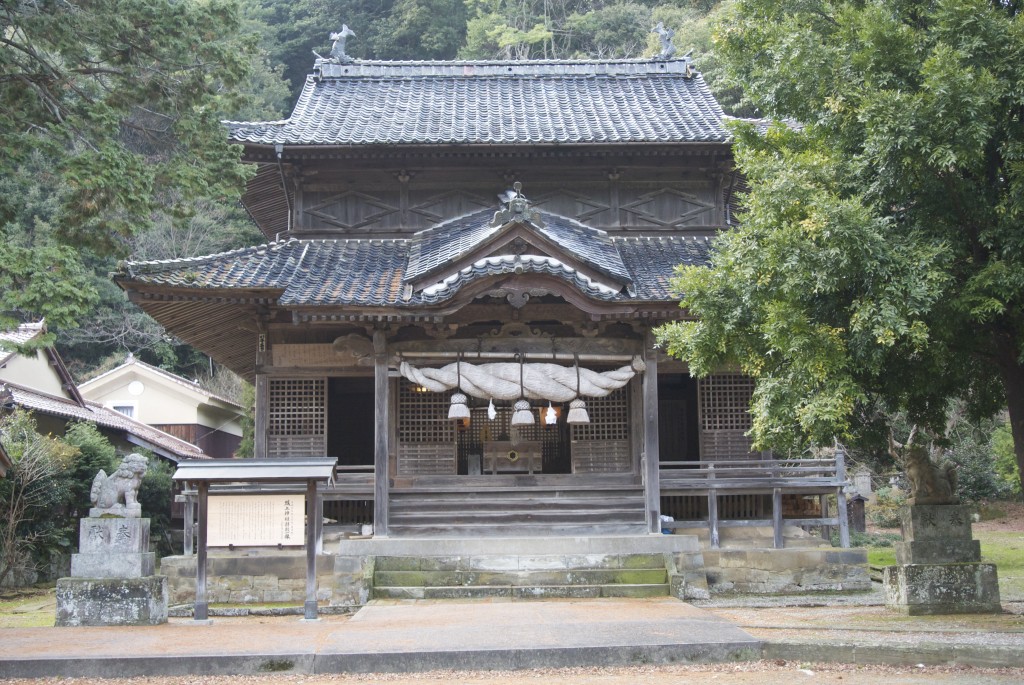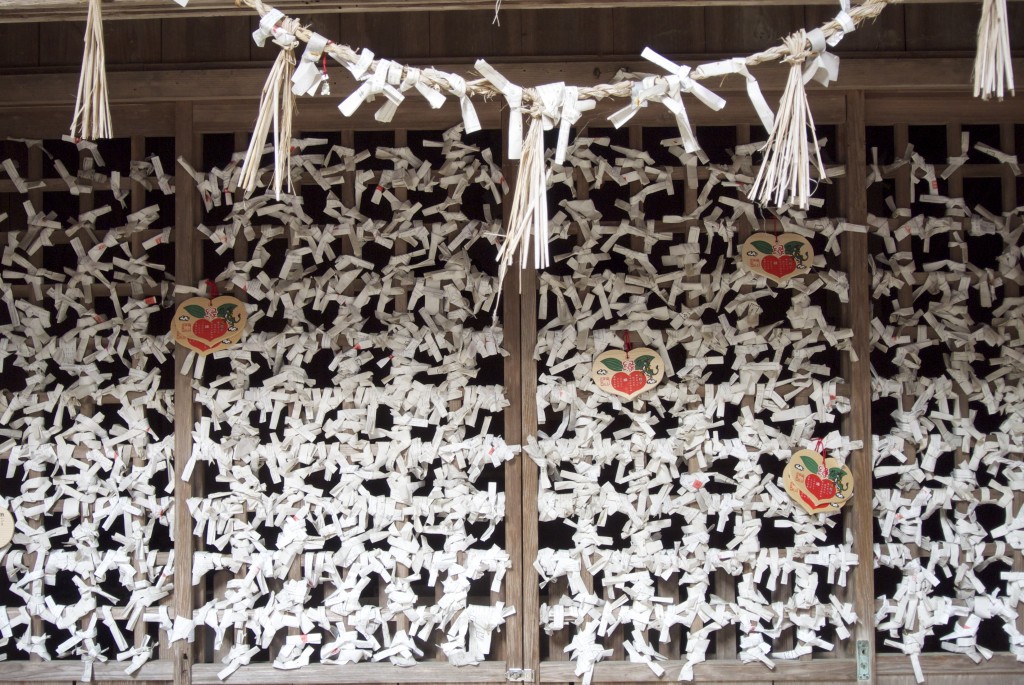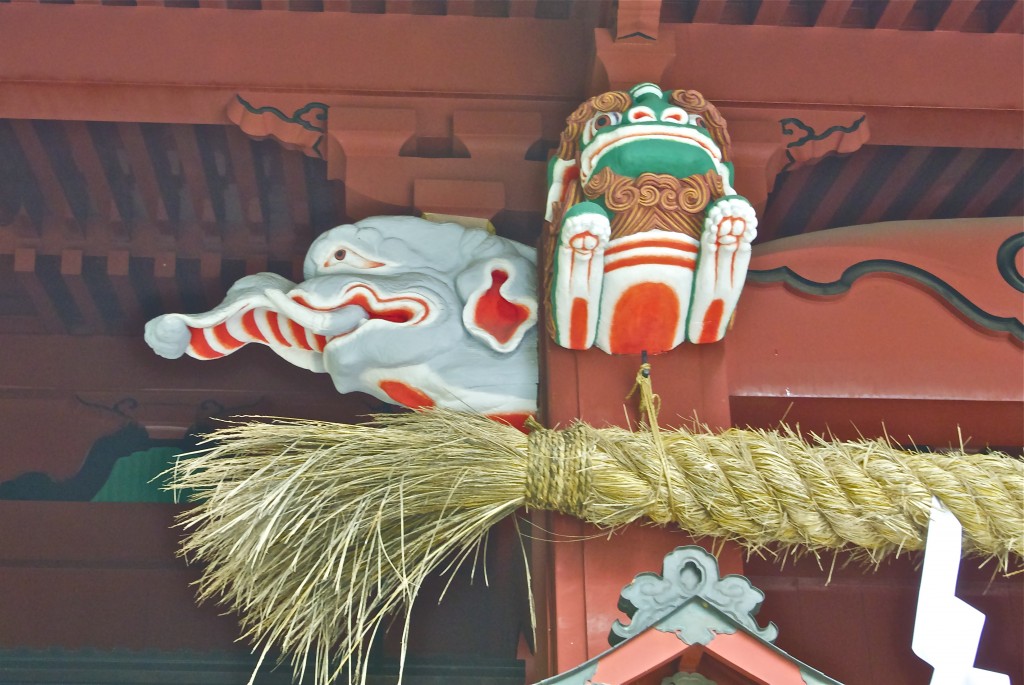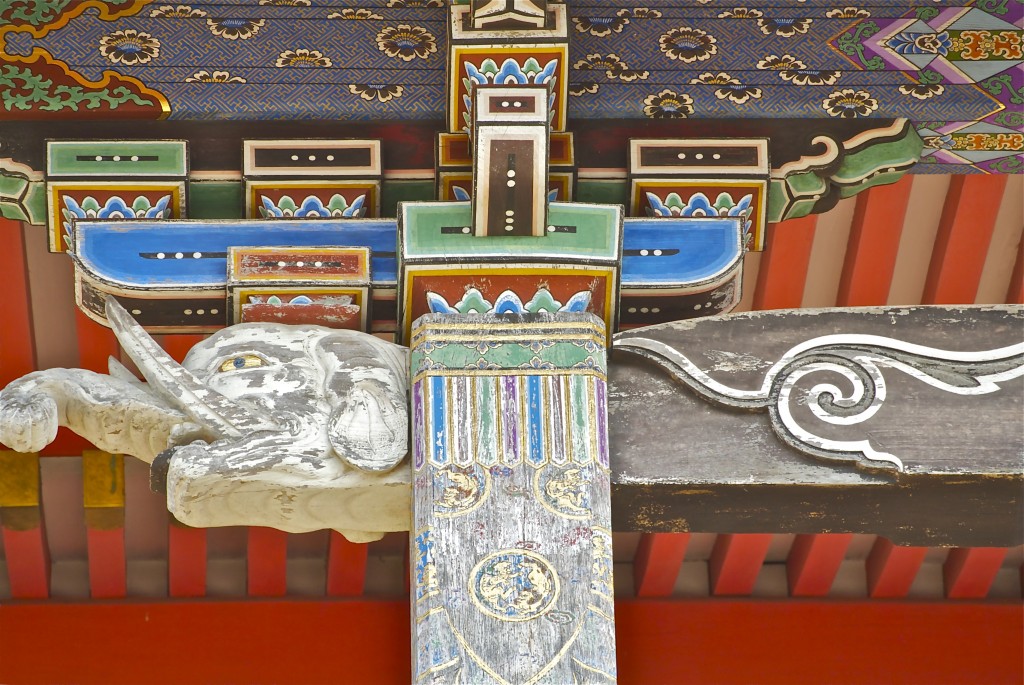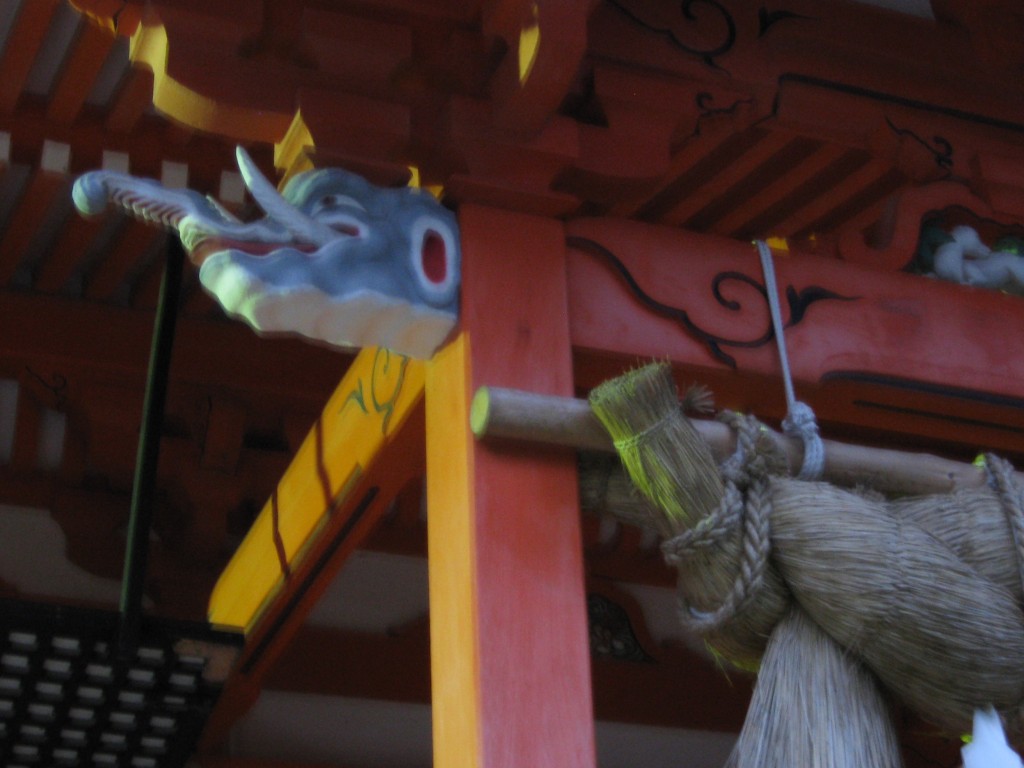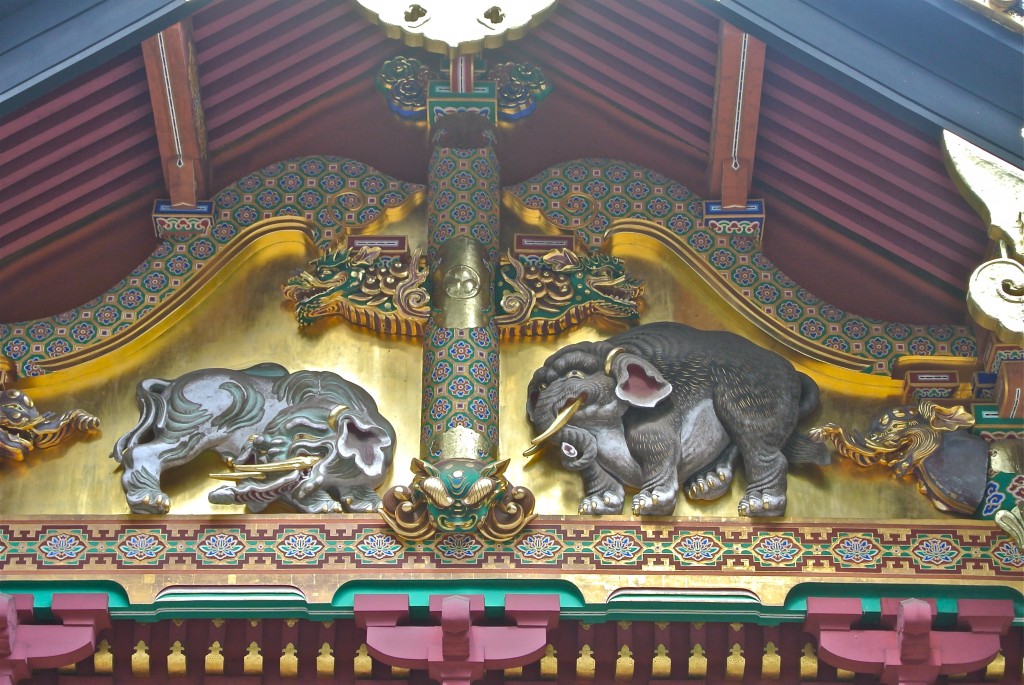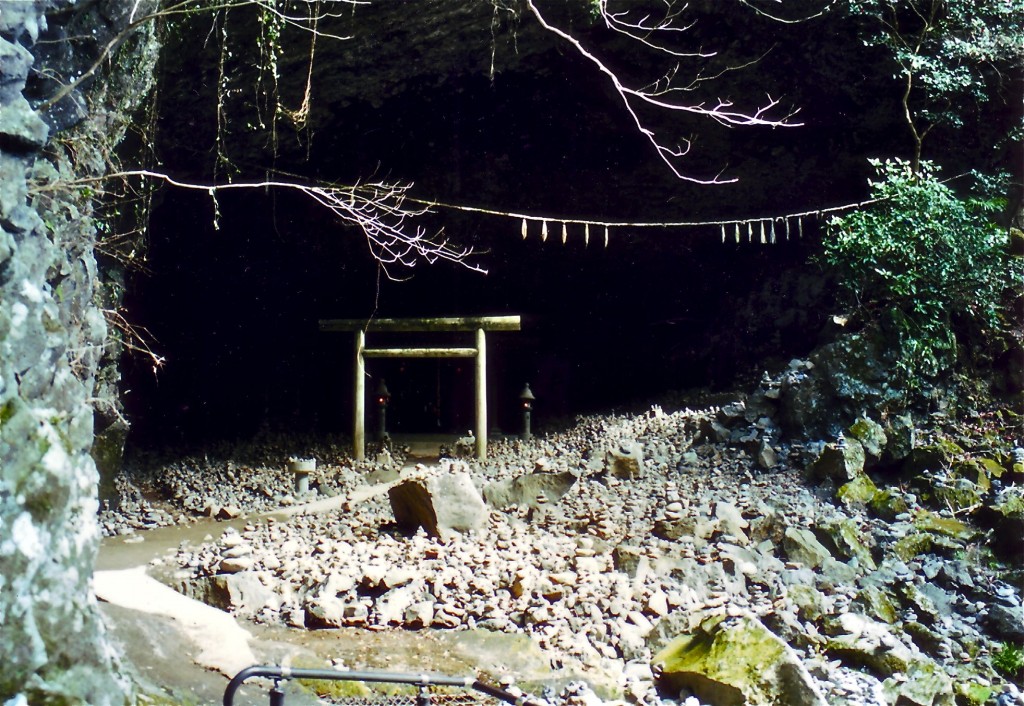
The rock-cave at Takachiho in Kyushu, one of several that honours the Rock Cave myth in which the sun goddess withdraws and casts the world into darkness. A joyous festival organised by the other deities then entices her back out again.
Green Shinto would like to wish its readers all the best for the winter solstice as those of us in the northern hemisphere pass through the darkest days of the annual cycle with revelry and Yuletide fires to ward off the cold. The word “solstice” derives from the Latin words “sol” (sun) and “sistere” (to stand still). From here on we’ll be looking forward to movement again as nature goes about the process of renewal and regeneration, even in the midst of death. Life-death-rebirth is what nature religions are all about.
Wikipedia has a nice section on the historical significance of the solstice, which follows below. It’s of particular interest to Shinto since it ‘sheds light’ on the primal Rock Cave myth with its story about the withdrawal of the sun goddess. The myth tells us that human activity provides the remedy for such dark times, so let the feasting and the festivities begin!
*********************************************************
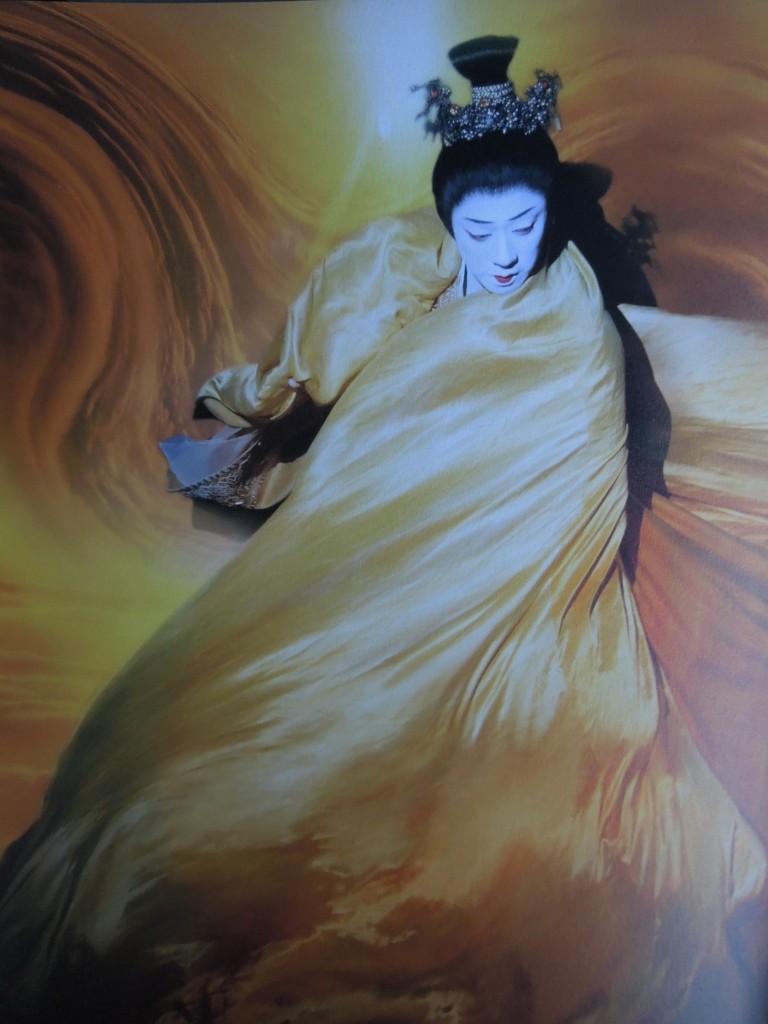
The sun goddess Amaterasu as portrayed by Bando Tamasaburo
The solstice itself may have been a special moment of the annual cycle of the year even during neolithic times. Astronomical events, which during ancient times controlled the mating of animals, sowing of crops and metering of winter reserves between harvests, show how various cultural mythologies and traditions have arisen. This is attested by physical remains in the layouts of late Neolithic and Bronze Age archaeological sites, such as Stonehenge in England and Newgrange in Ireland.
The primary axes of both of these monuments seem to have been carefully aligned on a sight-line pointing to the winter solstice sunrise (Newgrange) and the winter solstice sunset (Stonehenge). Significant in respect of Stonehenge is the fact that the Great Trilithon was erected outwards from the centre of the monument, i.e., its smooth flat face was turned towards the midwinter Sun.
The winter solstice may have been immensely important because communities were not certain of living through the winter, and had to be prepared during the previous nine months. Starvation was common during the first months of the winter, January to April (northern hemisphere) or July to October (southern hemisphere), also known as “the famine months”.
In temperate climates, the midwinter festival was the last feast celebration before deep winter began. Most cattle were slaughtered so they would not have to be fed during the winter, so it was almost the only time of year when a supply of fresh meat was available. The majority of wine and beer made during the year was finally fermented and ready for drinking at this time. The concentration of the observances were not always on the day commencing at midnight or at dawn, but the beginning of the pre-Romanized day, which falls on the previous eve.
Because the event is seen as the reversal of the Sun‘s ebbing presence in the sky, concepts of the birth or rebirth of sun gods have been common and, in cultures using winter solstice based cyclic calendars, the year as reborn has been celebrated with regard to life-death-rebirth deities or new beginnings. Also reversal is yet another usual theme as in Saturnalia‘s slave and master reversals.
Saturnalia – In Ancient Rome, the Winter Solstice festival referred to as Saturnalia began on December 17 and lasted for seven days. It was held to honor Saturnus, the Roman god of agriculture and harvest, and was characterized by the suspension of discipline and reversal of the usual order. Grudges and quarrels were forgiven, while businesses, courts and schools were closed. Wars were interrupted or postponed, and people engaged in carnival-like festivities. The popularity of Saturnalia continued into the third and fourth centuries AD, and as the Roman Empire came under Christian rule, some of the festival’s customs have influenced the seasonal celebrations surrounding Christmas and the New Year.
***************************************
Some pagan celebrations (taken from The Winter Solstice: Facts and Folklore by Farmers’ Almanac Staff)
The Winter Solstice has played an important role in cultures worldwide from ancient times until today. In fact, many of the customs, lore, symbols, and rituals associated with Christmas are actually associated with Winter Solstice celebrations of ancient Pagan cultures.
Alban Arthuan, Welsh for “Light of Winter,” is a universal festival, which has been (and still is) celebrated by many people and is probably the oldest seasonal festival of humankind. In Druidic traditions, the Winter Solstice is thought of as a time of death and rebirth when Nature’s powers and our own souls are renewed. It marks the moment in time when the Old Sun dies (at dusk on the 21st of December) and when the Sun of the New Year is born (at dawn on the 22nd of December), framing the longest night of the year.
The birth of the New Sun is thought to revive the Earth’s aura in mystical ways, giving a new lease on life to spirits and souls of the dead. The prehistoric monument, Newgrange, built in Ireland around 3200 BC (making it older than Stonehenge), is associated with the Alban Arthuan festival. The site consists of a large circular mound with a stone passageway and interior chambers. When the sun rises, the chamber is flooded with sunlight on the Winter Solstice.
The Feast of Juul was a festival observed in Scandinavia when fires were lit to symbolize the heat, light and life-giving properties of the returning Sun. A Yule or “Juul” log was brought in and burned on the hearth in honor of the Scandinavian god, Thor. It was Thor’s job to bring the warmth of the Sun back to the people. The log, which was never allowed to burn entirely, was kept as both a token of good luck against misfortune, and used as kindling for the following year’s log. In England, Germany, France and other European countries, the Yule log was burned until nothing but ash remained. The ashes were then collected and spread into the fields as fertilizer every night until Twelfth Night, or worn around the neck as a charm. The ashes were sometimes used in medicine.
French peasants would place the cooled ashes from the log under their beds, believing they would protect the house against thunder and lightning. The present-day custom of lighting a Yule log at Christmas is believed to have originated with these fires associated with the Feast of Juul.
In addition to the traditions from western cultures, the Dongzhi Winter Solstice Festival is celebrated as a time for the entire family to get together to celebrate the past good year. As ancient Chinese thought, the yang, or muscular, positive things will become stronger and stronger after this day, so it should be celebrated. [Wikipedia adds; “The origins of this festival can be traced back to the yin and yang philosophy of balance and harmony in the cosmos. After this celebration, there will be days with longer daylight hours and therefore an increase in positive energy flowing in. The philosophical significance of this is symbolized by the I Ching hexagram fù (復, “Returning”).”]
***************************************
For a piece about the Hidden Sun, see here. For previous entries on the winter solstice, see here or here.
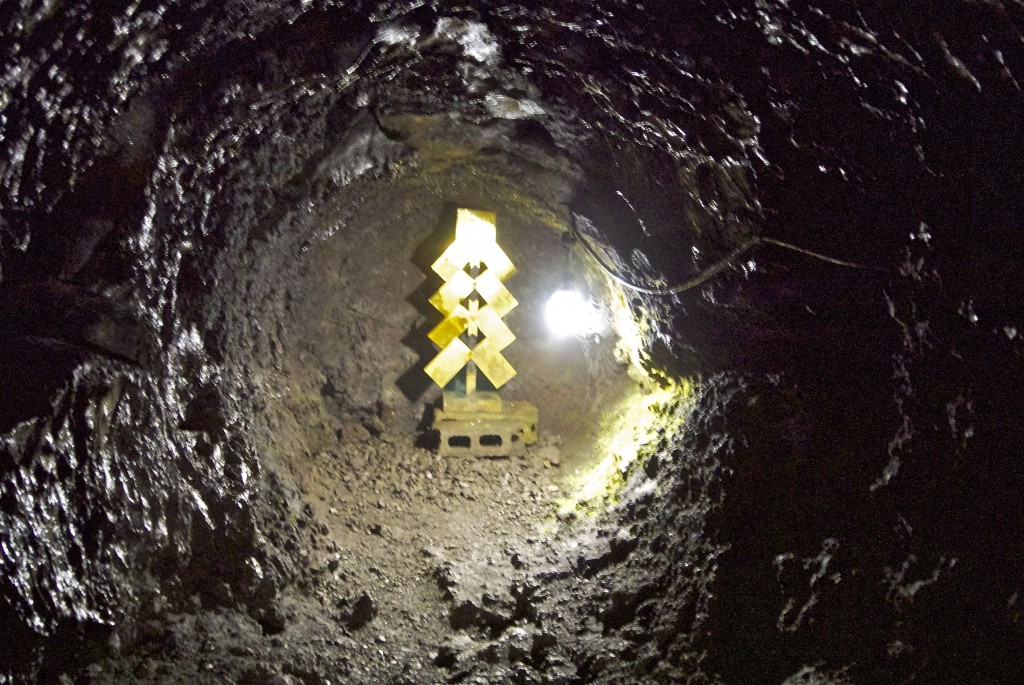
Even in the darkest of times the promise of light shines forth
********************************************
P.S. Since this piece was posted, our Taoist friend Michael R. Saso has written an informative piece on his Facebook page giving more details about the Chinese celebration of the winter solstice….
In China, Japan and other East Asian cultures, Winter Solstice is celebrated by an evergreen cutting, similar to the Christmas tree, made by clipping off the branch of a tree, and hanging it over the household spirit shrine. Like the Christmas tree, it is decorated with fruits and candies. South China, Gwangdong, Hong Kong, Macao, and Taiwan, also decorate homes and offices with shrub like tangerine trees. The orange fruit brightens homes and business through the solar and lunar New Year festivals. The winter months, celebrating nature’s annual rest and rebirth, are also blessed by the flowering of the winter plum blossom, placed beside the colorful tangerines of winter.
Modern Chinese families celebrate the Winter Solstice with a family banquet. The most important item is a sweet soup, made of glutinous rice balls filled with nuts and sesame seed, called Tangyuan 糖圆. The Tangyuan is a symbol of yang’s rebirth in the depths of the ocean. In some families, both white and pink rice balls are put in the soup, signifying that after the solstice, the cold, short days of winter will soon begin to lengthen, with the returning sun’s warmth and brightness,
The Winter Solstice was one of the biggest events of Imperial China. On this day the Emperor of China was required, from ancient times, to offer sacrifice to heaven, by ceremonially plough the ground, to insure good crops and blessing for the coming year. The place for performing this ritual, during the Ming and Qing dynasties, was the temple of Heaven, in Beijing. The Emperor would spend a period of prayer and retreat in the Temple grounds. Then he would go early in the morning to an elevated, circular altar, and stand in the middle of an outdoor stone platform. Here he would address heaven, while standing on a convex, circular stone, which stands right in the middle of the outdoor altar, directly under the heavens. Until 1949, it was strictly prohibited for anyone, other than Court mandarins, and members of the Board of Rites, to enter the Temple of Heaven. Only the emperor himself could stand on this stone and offer prayer.
Nowadays, we can all experience what the emperor felt, when he made this Winter Solstice prayer to heaven. But to do so, we must wait patiently in a line of daily visitors who stand on the stone, making the “V” sign with their fingers, while being photographed by family, friends, or suitors. Please try to do this, when you are in Beijing. Go early in the morning, or just before closing, to this stone. Stand on it, look up to the heavens, and speak. You will experience a most amazing phenomenon, as your voice is carried straight upward, with an echo, into the heavens. Whether by plan, or by chance, prayers made out loud on this stone, are by the laws of physics, carried heavenward. You will feel it so, if even for a moment, before the next set of waiting tourists climb onto the stone for a picture.
